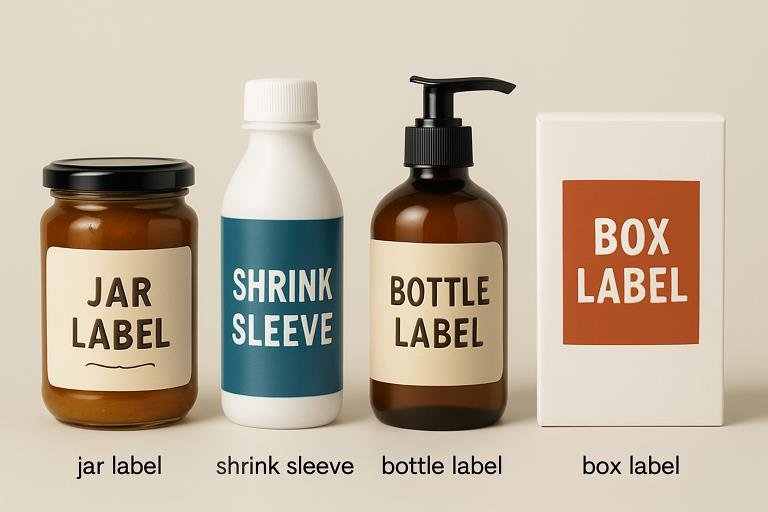Key Takeaways
- Product labels influence consumer trust, sales, and regulatory compliance.
- Different materials and printing choices affect durability, appearance, and cost.
- Accurate information and clear design on labels can improve product shelf appeal.
- Labeling mistakes may result in legal issues or loss of consumer confidence.
- Sustainability trends are shaping modern label options.
Why Product Labels Matter More Than Ever
A product label is often the silent ambassador of your brand, serving as the first point of contact between your item and potential buyers to convey quality, intent, and trust. In supermarkets, online listings, or independent stores, a well-chosen label can sway decisions. Labels are more than decoration—they influence perception and product choice. Brands now have many options for custom labels that suit every packaging style, environment, and ethos. From gourmet foods to skincare, labels represent the product when you’re not there. A Forbes article states nearly 75% of shoppers say packaging and label design directly impact their buying decisions, highlighting the crucial role labels play in marketing.
Main Types of Product Labels
Choosing a label style isn’t only about aesthetics; it’s about matching durability, usage, and regulatory obligations with your packaging needs. Most brands find themselves deciding between these main options:
- Pressure-sensitive labels:These versatile choices work on nearly any container shape or material and are staples in the food, beverage, and health industries.
- Shrink sleeves:Fully wrap containers for eye-catching 360-degree branding, ideal for beverage bottles and non-traditional shapes.
- In-mold labels:Incorporated during the manufacturing process, these create a premium, seamless finish and outstanding durability.
- Thermal labels:Commonly used for perishables and shipping, these are printed on demand for maximum information accuracy and efficiency.
What to Include on a Product Label
Every label has a role: inform, comply, or entice. For regulated products such as food, supplements, or cosmetics, laws require clear ingredient lists, expiration dates, nutritional information, and warnings. Even in less regulated fields, transparency with branding, usage instructions, and contact info is crucial. The FDA emphasizes clear and accurate labeling to help consumers make informed, safe choices. Shoppers now expect brands to be compliant and transparent. Good labeling builds trust and influences repeat purchases, as highlighted in recent studies from Packaging Digest.
Essential Design Elements for Standout Product Labels
An exceptional product won’t sell on a shelf if the label is hard to read, poorly balanced, or unmemorable. Eye movement studies suggest shoppers consider a new product in as little as 1.5 seconds. To succeed, prioritize:
- Legible fonts:Make critical details easy to scan from any angle.
- Color use:Draw attention without overwhelming, and maintain consistency with brand image.
- High-resolution graphics:Ensure the label looks sharp and professional in any lighting condition.
- Ample white space:Prevents a crowded or cluttered feel, enhancing readability.
- Brand consistency:Logos, colors, and fonts should align with your overall branding for instant recognition.
Materials and Printing Methods: Choices That Matter
Select label materials and printing methods that align with your product’s lifecycle, taking into account its resilience to cold, heat, or humidity. Options include affordable papers, moisture-resistant vinyl, and food-safe polypropylene. Printing can be digital, offset, or flexographic, depending on the volume and finish requirements. Eco-friendly options—such as plant-based facestocks, biodegradable adhesives, and recyclable substrates—are increasingly popular, helping brands meet sustainability standards and stand out.
Common Mistakes to Avoid With Product Labels
Even established businesses face labeling mistakes, such as unclear fonts, overloaded layouts, missing or incorrect statutory statements, and non-compliant ingredient lists. In regulated sectors, such as food and supplements, these errors can lead to fines and costly recalls, ultimately harming both finances and reputation. Small brands should verify every element for accuracy and compliance by carefully reviewing information and consulting relevant guidelines. High-profile cases show how quickly a label mistake can derail a product’s progress.
Sustainability in Labeling: Rising Expectations
With green consumerism on the rise, brands of all sizes are expected to reduce their environmental impact, including through their labeling. It involves utilizing renewable materials, non-toxic adhesives, and designing products for recyclability. Adopting these practices not only helps the environment but also enhances brand value as consumer preference increasingly leans toward eco-friendly packaging solutions.
Market analysis from Packaging World reveals significant year-over-year growth in sustainable packaging, indicating that this trend is here to stay across all segments of the industry.
How to Choose the Right Label for Your Product
- Evaluate your product’s exposure to heat, cold, moisture, or friction.
- Ensure you understand and comply with industry-specific regulations.
- Consider your target audience and their expectations for your brand.
- Balance your budget with necessary durability and stylistic needs.
- Request test samples and prototypes before mass production.
Professional designers and specialty printers can offer cost-saving advice, material suggestions, and guidance on compliance, ensuring your labels both look great and comply with legal and practical requirements.
Closing Thoughts
Choosing the right product label isn’t just a task; it’s a strategic investment in your brand’s future. Great labels tell a story, build credibility, and help ensure that consumers return again and again. By staying informed about trends, compliance, and design best practices, brands and makers can create labels that stand out and support lasting success.



